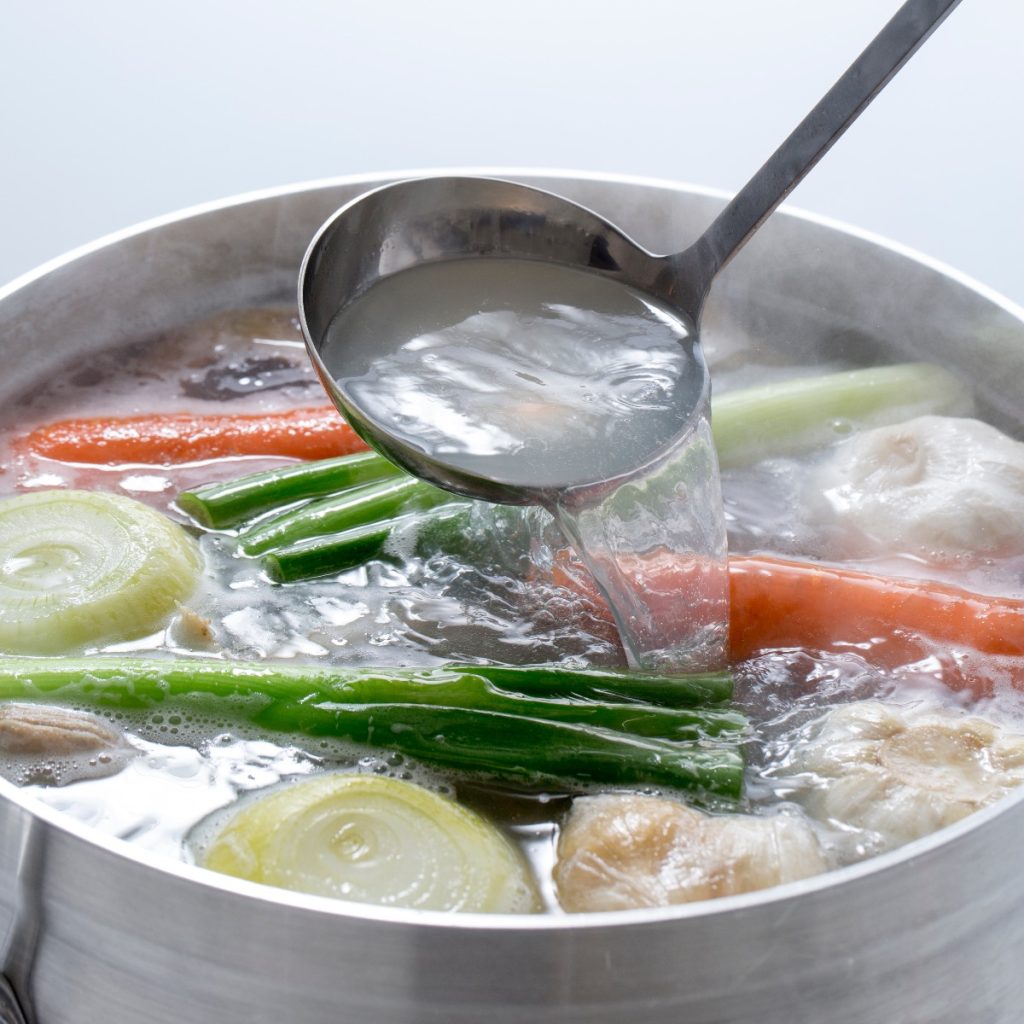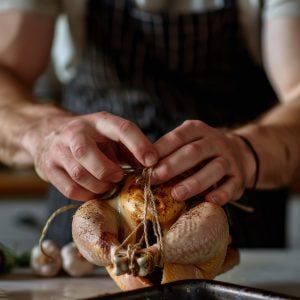“Is it boiling yet?”
Nope—just simmering. That’s precisely where the magic happens.
Simmering sounds simple, right? But it’s one of those kitchen tricks that many home cooks overlook. When you get it down, though, it works magic—turning out tender meats, rich sauces, and perfectly cooked grains.
No frantic bubbling or sluggish low heat—just that perfect in-between. If you’ve ever scorched a stew, ended up with mushy rice, or dried out your chicken, chances are you missed the sweet spot: the simmer.
In this post, I’ll explain simmering, why it makes such a difference, and how to nail it every time. You’ll also learn tips on holding the perfect temperature, adjusting your heat like a pro, and knowing when to cover your pot (or when to leave it open).
Whether you’re crafting a silky soup, braising short ribs, or finishing off a tomato sauce, simmering quietly works behind the scenes to elevate your cooking. So step back from the full boil, turn down the heat, and let’s dive in—because once you master the simmer, your food won’t just cook… it’ll shine.
Foods That Do Well By Simmering & Why
Ingredient | Why It Works Well | Description |
| Tough Cuts of Meat (chuck roast, short ribs, pork shoulder) | Breaks down connective tissue for fork-tender results | Low, moist heat melts collagen into rich gelatin, creating tender, juicy meat. |
| Root Vegetables (carrots, potatoes, parsnips, turnips) | Cooks evenly without falling apart | Gentle simmering softens dense vegetables while preserving texture and flavor. |
| Dried Beans & Legumes (lentils, chickpeas, black beans) | Promotes creamy interiors without splitting skins | Slow simmering allows beans to cook through without becoming mushy. |
| Grains (rice, barley, farro, quinoa) | Ensures even cooking and absorption | Simmering allows grains to absorb liquid at the perfect pace, yielding ideal texture. |
| Poultry (bone-in thighs, drumsticks) | Keeps meat juicy while cooking through | Gentle heat preserves moisture and enhances flavor in tender chicken pieces. |
| Seafood (firm fish, shrimp, mussels, clams) | Cooks delicately without toughness | Simmering prevents overcooking, maintaining tender, silky textures. |
| Tomatoes (for sauces, soups, stews) | Builds deep, rich flavor | Slow simmering concentrates flavors and balances acidity in tomato-based dishes. |
| Herbs & Aromatics (bay leaves, thyme, rosemary, garlic, onions) | Gently infuses flavor | Prolonged simmering extracts and layers subtle aromas into the dish. |
| Stocks & Broths (chicken, beef, vegetable) | Clarifies and builds depth | A slow simmer releases flavors from bones and vegetables without clouding broth. |
Tips for Simmering
Tip | Description |
| Target Temperature | Aim for 185°F to 205°F (85°C to 96°C). Bubbles should be small, gentle, and occasional—not a rolling boil. |
| Use Visual Cues | Look for lazy bubbles breaking the surface every few seconds, with little steam and no aggressive bubbling. |
| Season in Stages | Add seasoning at the start for base flavor, adjust mid-simmer, and taste again at the end for perfect balance. |
| Start with a Boil, Then Lower | Bring liquids to a boil first, then lower the heat to reach a steady simmer. |
| Adjust the Flame as Needed | Stove settings change with pot size and ingredients. Adjust heat frequently to maintain a steady simmer. |
| Partially Cover When Needed | Use a lid partially on to control evaporation and splatters without stopping reduction. |
| Don’t Crowd the Pot | Give ingredients room to circulate—overcrowding can lower the temperature and prevent even simmering. |
| Skim Occasionally | Skim off foam and impurities (especially with stocks or broths) for a cleaner flavor and clearer liquid. |
| Patience Pays Off | Simmering is slow cooking. Give time for flavors to develop and textures to soften—you can’t rush it! |
Lid On or Lid Off?
Lid Position | When to Use It | Why |
| Lid On | When you want to trap moisture and heat (soups, braises, stews you want to stay juicy) | Speeds up cooking, retains moisture, keeps flavors concentrated inside |
| Lid Off | When you want to reduce a sauce, thicken a stew, or intensify flavors | Allows evaporation, helps concentrate flavor, thickens liquids |
| Partially Covered | When you want a bit of both—slow reduction while controlling splatters (chili, long-simmered grains, brothy stews) | Slows evaporation a little, prevents splattering, balances moisture retention and reduction |
What Is Simmering?
Simmering picks up where poaching leaves off. The simmering liquid should be at a temperature between 190°F – 205°F (88°C – 96°C).
While poaching is a relatively long cooking process for delicate foods, simmering is usually a very long cooking process designed to a) break down the connective tissue in tough, fatty meats and b) concentrate flavors through reduction.
Braises and stews are cooked at a simmer for both of those reasons. Aside from the temperature difference, the primary difference between poaching and simmering is that the simmering liquid is generally served as a sauce for the food being simmered.
Beef stew isn’t beef stew without the gravy.
Again, rather than taking the temperature of the simmering liquid, it is best to know what signs to look for.
- Steam will rise rapidly from the simmering liquid.
- Small bubbles will rise from the bottom of the pan, breaking the surface.
- Bubbling will not be vigorous but will be constant.
The types of foods that lend themselves well to simmering include but are not limited to dried beans, tough meats containing a lot of connective tissue, and certain cruciferous vegetables, such as cabbage, kohlrabi, all sorts of hearty greens, Brussels sprouts, and bok choy.
Since simmering is generally used to cook heartier foods than eggs and fish, there are fewer mistakes to consider.
Take It Easy and Watch the Heat
When simmering, make sure that you keep the liquid at a simmer. That sounds pretty simplistic, but remember what you’re looking for a gentle bubbling. If the bubbling is vigorous, you know you have overshot simmer and gone on to boiling. Turn the burner down so you have lazily bursting bubbles.
To be more precise, don’t be afraid to use the oven when simmering. Bring your cooking liquid to a boil on the stove, then put it in a 210°F (99°C) to let it simmer away until done.
Especially when simmering tough meats, be certain to allow the meat to cool in the cooking liquid. That way, the muscle fibers can gradually reabsorb the liquid. If you cool the meat separately from the liquid, the meat will dry out as it cools.




